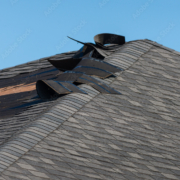Weathering the Storm: The Importance of Wind-Resistant Roofing Systems
Weathering the Storm: The Importance of Wind-Resistant Roofing Systems
In the face of unpredictable weather patterns and an increase in severe storms, homeowners are increasingly recognizing the importance of a robust and dependable roofing system. The phrase “wind-resistant roofing system” has become a focal point in discussions about safeguarding homes from the destructive forces of windstorms, hurricanes, and other adverse weather conditions. At Davis Roofing Solutions, we understand the critical role that wind-resistant roofing systems play in protecting homes and ensuring the safety of occupants. In this comprehensive blog post, we’ll explore the significance of a wind-resistant roofing system, the factors that contribute to its effectiveness, and how homeowners can make informed choices to weather the storm.
The primary purpose of a wind-resistant roofing system is to withstand the powerful forces generated by high winds during storms and hurricanes. Wind can exert substantial pressure on a roof, leading to uplift, displacement, or even complete failure of roofing materials. A wind-resistant roofing system is designed and constructed to mitigate these risks, providing a barrier against wind damage and enhancing the overall resilience of the home.
One of the key elements contributing to the effectiveness of a wind-resistant roofing system is the choice of roofing materials. Various materials offer different levels of wind resistance, and homeowners should carefully consider their options based on the specific weather conditions of their region. For instance, metal roofing is renowned for its durability and ability to withstand high winds. Metal panels are securely fastened, creating a cohesive and wind-resistant barrier. Asphalt shingles, another popular choice, come in wind-resistant classes that indicate their ability to withstand specific wind speeds. Homeowners should choose roofing materials that align with the wind conditions prevalent in their geographic area.
The installation process plays a crucial role in the development of a wind-resistant roofing system. Even the most durable roofing materials can fail if not installed correctly. Professional roofing contractors, such as those at Davis Roofing Solutions, follow industry best practices and manufacturer guidelines to ensure that roofing materials are securely fastened and anchored to the roof deck. Proper installation includes the use of wind-resistant underlayment, secure flashing around roof penetrations, and adherence to local building codes that often specify wind-resistant requirements.
The roof deck, the structural foundation of the roof, is a critical component of a wind-resistant roofing system. A well-built and properly anchored roof deck provides the necessary support for roofing materials, preventing uplift and displacement during high winds. Regular inspections to assess the condition of the roof deck, including checking for signs of rot or deterioration, are essential to maintaining the integrity of the entire roofing system. Homeowners should address any issues promptly to ensure that their roof deck remains a sturdy foundation against wind forces.
In regions prone to hurricanes, understanding the wind uplift pressures specific to these storms is essential for designing a truly wind-resistant roofing system. The American Society of Civil Engineers (ASCE) provides guidelines for determining the wind loads that structures, including roofs, may face during hurricanes. These guidelines consider factors such as the wind speed of the hurricane, the exposure of the building, and the shape and height of the structure. By applying these standards, roofing professionals can design and install systems that meet or exceed the necessary wind resistance requirements.
In addition to selecting wind-resistant roofing materials, homeowners can enhance the overall resilience of their roofing system by investing in additional protective features. Roofing accessories, such as hurricane straps or clips, can be installed to reinforce the connection between the roof structure and the walls of the home. These accessories provide additional support, minimizing the risk of roof detachment during high winds. Working closely with roofing professionals ensures that these protective features are integrated seamlessly into the overall roofing system.
Regular roof inspections are a proactive measure to identify and address potential issues before they escalate. Routine inspections allow roofing professionals to assess the condition of roofing materials, identify any loose or damaged components, and ensure that the entire roofing system remains wind-resistant. Homeowners can schedule inspections after severe weather events, especially if the region has experienced high winds or storms. Timely inspections and repairs contribute to the longevity of the roofing system and its ability to withstand future weather challenges.
Understanding the wind resistance ratings of roofing materials is crucial for homeowners seeking to fortify their homes against wind damage. Roofing materials are often classified into wind-resistant classes, such as Class A to Class H, with higher classes indicating better wind resistance. Homeowners should be aware of the wind ratings associated with their chosen roofing materials and select options that align with the wind conditions of their location. Consulting with roofing professionals provides valuable insights into the wind resistance capabilities of different materials and helps homeowners make informed decisions.
Regional building codes often mandate specific wind resistance requirements for roofing systems to ensure the safety and durability of homes. Homeowners should familiarize themselves with these codes and work with roofing professionals who are well-versed in local regulations. Adhering to building codes not only ensures the wind resistance of the roofing system but also helps homeowners navigate the complexities of insurance coverage related to wind damage.
Climate considerations also play a role in determining the optimal wind-resistant roofing system for a home. Homes in coastal areas or regions prone to frequent high winds may require roofing systems with higher wind resistance capabilities. Understanding the climate of the region allows homeowners to make informed choices about the roofing materials, design, and additional protective features needed to weather the storm effectively.
In conclusion, investing in a wind-resistant roofing system is a proactive measure that pays dividends in the face of unpredictable weather patterns. The combination of durable roofing materials, proper installation, a sturdy roof deck, and additional protective features creates a roofing system capable of withstanding the powerful forces of windstorms and hurricanes. Homeowners partnering with experienced roofing professionals, such as those at Davis Roofing Solutions, can ensure that their roofing systems are not only aesthetically pleasing but also engineered to weather the storm and provide long-term protection for their homes.




